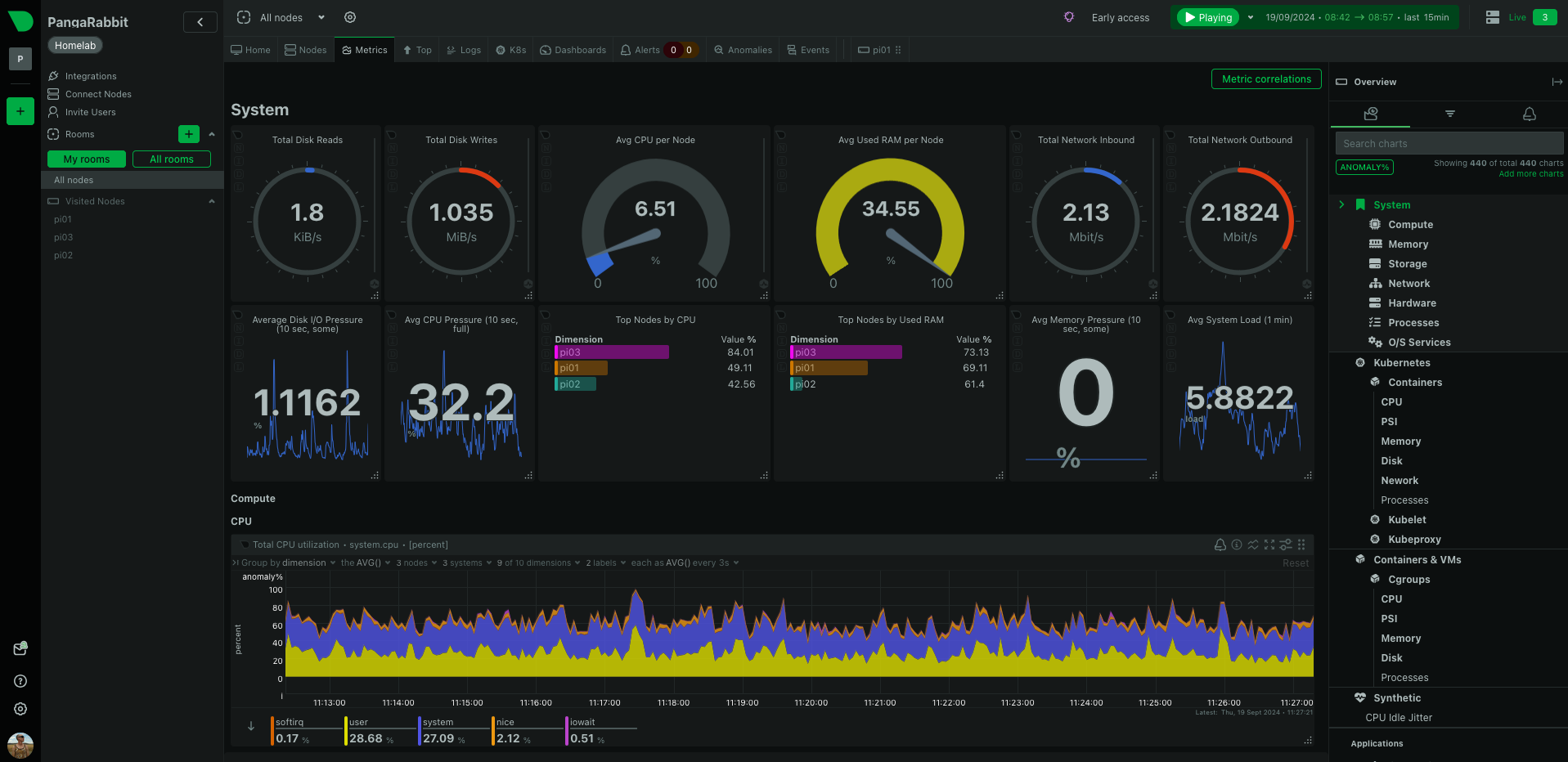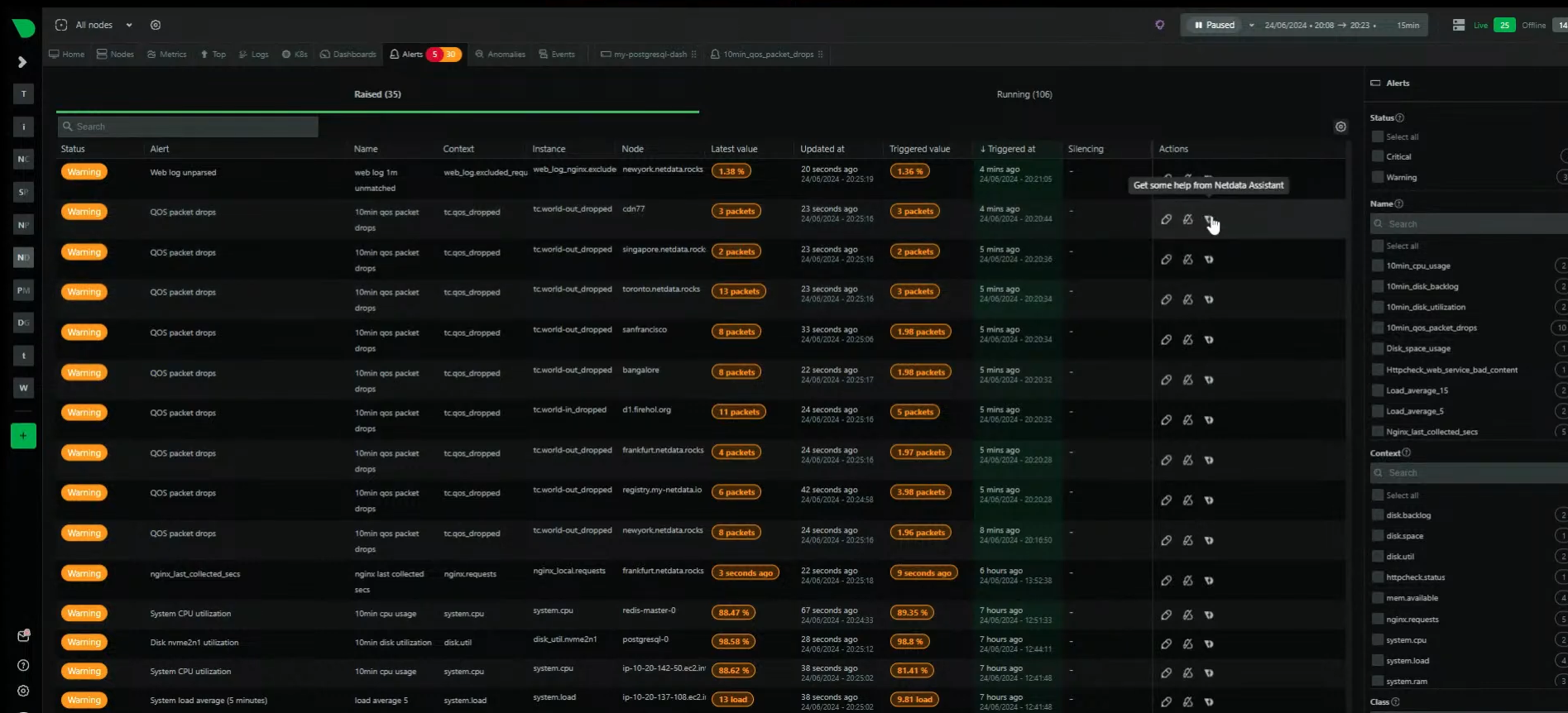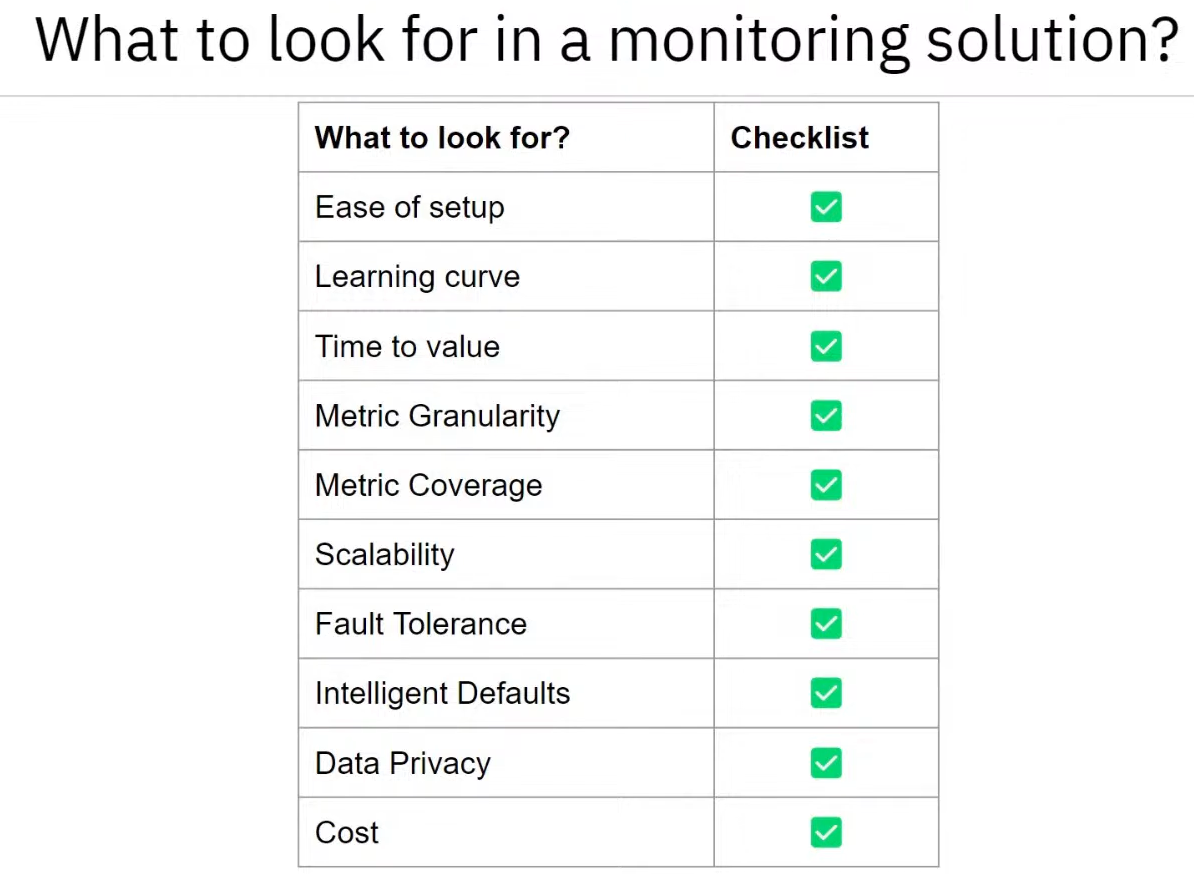Ortelius Blog
Topics include Supply Chain Security, Microservice Management, Neat Tricks, and Contributor insights.
How to Bake an Ortelius Pi Part 7 | Observability with Netdata
Introduction
In part 6 we deployed Localstack and exposed the endpoints through Traefik. We used the AWS cli and the Localstack wrapper awslocal to create and list S3 buckets and used Granted to configure our profiles.
In part 7 we will deploy Netdata as our Observability solution of choice. Netdata for me is like having your Observability multilayered cake and eating it. Why did I go with Netdata? I will list a few points as follows:
- With Netdata I don’t have to learn a whole new language just to get the metrics, graphs and visuals I need to have visibility into my Cloud environment
- I get instant metrics and graphs straight out of the box all in
real-time(yes real real-time, every second for every metric) at the click of a button - Rapid time to value
- Alerts and Ai for troubleshooting
- Netdata is super lightweight - Its running on 3 Pi 4B’s and a old Synology NAS as the centralised storage. That speaks lightweight to me
- Netdata has a very generous free tier which I used for a while before signing up for the
Homelaboption - None of my data is ever stored at Netdata
- No insane egress, scalability, storage data costs from a cloud provider
Gimlet GitOps Infrastructure
Netdata
- Learn Netdata
- Netdata Academy
- Netdata Docs
- Netdata Integrations
- Netdata Agents
- Netdata Daemon Configuration
- Netdata Organize Systems, Metrics and Alerts
- Netdata ML Models and Anomaly Detection
- Best Practices for DevOps
- Infrastructure Monitoring with Netdata Cloud
- Netdata Database Engine
- Netdata Helm Chart
- Install Netdata on Kubernetes
- Netdata Helm Chart for Kubernetes Deployments
Netdata Database Engine

Deploy Netdata
Right lets get stuck in and deploy Netdata using Gimlet, Fluxcd, Helm and a sprig of GitOps.
Helm-Repository | Netdata
- Lets add the Netdata Helm repository
- A Helm repository is a collection of Helm charts that are made available for download and installation
- Helm repositories serve as centralised locations where Helm charts can be stored, shared, and managed
- Create a file called
netdata.yamlin the helm-repositories directory and paste the following YAML
---
apiVersion: source.toolkit.fluxcd.io/v1beta1
kind: HelmRepository
metadata:
name: netdata
namespace: infrastructure
spec:
interval: 60m
url: https://netdata.github.io/helmchart/
Helm-Release | Netdata
- Lets create a Helm release for Netdata
- A Helm release is an instance of a Helm chart running in a Kubernetes cluster
- Each release is a deployment of a particular version of a chart with a specific configuration
- Create a file called
netdata.yamlin the helm-releases directory and paste the following YAML
Helm Chart Configuration Highlights
ingress:
enabled: true
annotations:
# kubernetes.io/ingress.class: traefik
kubernetes.io/tls-acme: "true"
path: /
pathType: Prefix
hosts:
- netdata.pangarabbit.com
## whole spec is going to be included into ingress spec.
## if you intend to use ingressClassName declaration, remove ingress.class from annotations
spec:
ingressClassName: traefik
# tls:
# - secretName: wilcard-pangarabbit-com-tls
# hosts:
# - netdata.pangarabbit.com
# parent
database:
persistence: true
## Set '-' as the storageclass to get a volume from the default storage class.
storageclass: "nfs-csi-netdata" # Add your storage class here
volumesize: 5Gi
alarms:
persistence: true
## Set '-' as the storageclass to get a volume from the default storage class.
storageclass: "nfs-csi-netdata" # Add your storage class here
volumesize: 1Gi
# k8s state
persistence:
enabled: true
## Set '-' as the storageclass to get a volume from the default storage class.
storageclass: "nfs-csi-netdata" # Add your storage class here
volumesize: 1Gi
# enabling anamolie detection with machine learning for parent and child
configs:
netdata:
enabled: true
path: /etc/netdata/netdata.conf
data: |
[ml]
enabled = yes
# claiming your room with the netdata agent for parent and child
claiming:
enabled: true
token: "" # Replace with your token
rooms: "" # Replace with your room id
url: "https://api.netdata.cloud"
---
apiVersion: helm.toolkit.fluxcd.io/v2beta2
kind: HelmRelease
metadata:
name: netdata
namespace: infrastructure
spec:
interval: 60m
releaseName: netdata
chart:
spec:
chart: netdata
version: 3.7.100 # Upgrade Netdata here by changing the version
sourceRef:
kind: HelmRepository
name: netdata
interval: 10m
values:
valuesObject:
replicaCount: 1
deploymentStrategy:
type: Recreate
imagePullSecrets: []
image:
repository: netdata/netdata
tag: "{{ .Chart.AppVersion }}"
pullPolicy: Always
sd:
image:
repository: netdata/agent-sd
tag: v0.2.9
pullPolicy: Always
child:
enabled: true
configmap:
name: netdata-child-sd-config-map
key: config.yml
# if 'from' is {} the ConfigMap is not generated
from:
file: sdconfig/child.yml
value: {}
resources:
limits:
cpu: 50m
memory: 150Mi
requests:
cpu: 50m
memory: 100Mi
initContainersImage:
repository: alpine
tag: latest
pullPolicy: Always
sysctlInitContainer:
enabled: false
command: []
resources: {}
service:
type: ClusterIP
port: 19999
annotations: {}
## Only to be used with type LoadBalancer
# loadBalancerIP: 10.0.1.69
# loadBalancerSourceRanges: []
# externalTrafficPolicy: Local
## Only to be used with type LoadBalancer and external traffic policy Local
# healthCheckNodePort:
## Only to be used with type ClusterIP
# clusterIP: 10.1.2.3
ingress:
enabled: true
annotations:
# kubernetes.io/ingress.class: traefik
kubernetes.io/tls-acme: "true"
path: /
pathType: Prefix
hosts:
- netdata.pangarabbit.com
## whole spec is going to be included into ingress spec.
## if you intend to use ingressClassName declaration, remove ingress.class from annotations
spec:
ingressClassName: traefik
# tls:
# - secretName: wilcard-pangarabbit-com-tls
# hosts:
# - netdata.pangarabbit.com
rbac:
create: true
pspEnabled: true
serviceAccount:
create: true
name: netdata
restarter:
enabled: true
schedule: "00 06 * * *"
image:
repository: bitnami/kubectl
tag: 1.25
pullPolicy: Always
restartPolicy: Never
resources:
{}
# limits:
# cpu: 500m
# memory: 64Mi
# requests:
# cpu: 250m
# memory: 32Mi
concurrencyPolicy: Forbid
startingDeadlineSeconds: 60
successfulJobsHistoryLimit: 3
failedJobsHistoryLimit: 3
notifications:
slack:
webhook_url: ""
recipient: ""
parent:
enabled: true
port: 19999
resources:
{}
# limits:
# cpu: 4
# memory: 4096Mi
# requests:
# cpu: 4
# memory: 4096Mi
livenessProbe:
initialDelaySeconds: 0
failureThreshold: 3
periodSeconds: 30
successThreshold: 1
timeoutSeconds: 1
readinessProbe:
initialDelaySeconds: 0
failureThreshold: 3
periodSeconds: 30
successThreshold: 1
timeoutSeconds: 1
terminationGracePeriodSeconds: 300
nodeSelector: {}
tolerations: []
affinity: {}
priorityClassName: ""
env:
{}
## To disable anonymous statistics:
# DO_NOT_TRACK: 1
envFrom:
[]
## E.g. to read Netdata Cloud claim token from an existing secret "netdata" set this to:
# - secretRef:
# name: netdata
## And create it with: kubectl create secret generic netdata --from-literal="NETDATA_CLAIM_TOKEN=<token>"
## Also ensure that claim.token is empty
podLabels: {}
podAnnotations: {}
dnsPolicy: Default
database:
persistence: true
## Set '-' as the storageclass to get a volume from the default storage class.
storageclass: "nfs-csi-netdata" # Add your storage class here
volumesize: 5Gi
alarms:
persistence: true
## Set '-' as the storageclass to get a volume from the default storage class.
storageclass: "nfs-csi-netdata" # Add your storage class here
volumesize: 1Gi
configs:
netdata:
enabled: true
path: /etc/netdata/netdata.conf
data: |
[global]
hostname = netdata-parent
[db]
mode = dbengine
[plugins]
cgroups = no
tc = no
enable running new plugins = no
check for new plugins every = 72000
python.d = no
charts.d = no
go.d = no
node.d = no
apps = no
proc = no
idlejitter = no
diskspace = no
stream:
enabled: true
path: /etc/netdata/stream.conf
data: |
[11111111-2222-3333-4444-555555555555]
enabled = yes
history = 3600
default memory mode = dbengine
health enabled by default = auto
allow from = *
health:
enabled: true
path: /etc/netdata/health_alarm_notify.conf
data: |
SEND_EMAIL="NO"
SEND_SLACK="YES"
SLACK_WEBHOOK_URL="{{ .Values.notifications.slack.webhook_url }}"
DEFAULT_RECIPIENT_SLACK="{{ .Values.notifications.slack.recipient }}"
exporting:
enabled: false
path: /etc/netdata/exporting.conf
data: ""
example:
enabled: false
path: /etc/netdata/health.d/example.conf
data: |
alarm: example_alarm1
on: example.random
every: 2s
warn: $random1 > (($status >= $WARNING) ? (70) : (80))
crit: $random1 > (($status == $CRITICAL) ? (80) : (90))
info: random
to: sysadmin
claiming:
enabled: true
token: "" # Replace with your token
rooms: "" # Replace with your room id
url: "https://api.netdata.cloud"
extraVolumeMounts: []
extraVolumes: []
child:
enabled: true
port: "{{ .Values.parent.port }}"
updateStrategy:
{}
# type: RollingUpdate
# rollingUpdate:
# maxUnavailable: 1
resources:
{}
# limits:
# cpu: 4
# memory: 4096Mi
# requests:
# cpu: 4
# memory: 4096Mi
livenessProbe:
initialDelaySeconds: 0
failureThreshold: 3
periodSeconds: 30
successThreshold: 1
timeoutSeconds: 1
readinessProbe:
initialDelaySeconds: 0
failureThreshold: 3
periodSeconds: 30
successThreshold: 1
timeoutSeconds: 1
terminationGracePeriodSeconds: 30
nodeSelector: {}
tolerations:
- operator: Exists
effect: NoSchedule
affinity: {}
priorityClassName: ""
podLabels: {}
podAnnotationAppArmor:
enabled: true
podAnnotations: {}
hostNetwork: true
dnsPolicy: ClusterFirstWithHostNet
persistence:
enabled: true
hostPath: /var/lib/netdata-k8s-child
podsMetadata:
useKubelet: false
kubeletUrl: "https://localhost:10250"
configs:
netdata:
enabled: true
path: /etc/netdata/netdata.conf
data: |
[db]
mode = ram
[health]
enabled = no
[ml]
enabled = yes
stream:
enabled: true
path: /etc/netdata/stream.conf
data: |
[stream]
enabled = {{ ternary "yes" "no" .Values.parent.enabled }}
destination = netdata:{{ .Values.service.port }}
api key = 11111111-2222-3333-4444-555555555555
timeout seconds = 60
buffer size bytes = 1048576
reconnect delay seconds = 5
initial clock resync iterations = 60
exporting:
enabled: false
path: /etc/netdata/exporting.conf
data: ""
go.d:
enabled: true
path: /etc/netdata/go.d.conf
data: |
modules:
pulsar: no
prometheus: yes
kubelet:
enabled: true
path: /etc/netdata/go.d/k8s_kubelet.conf
data: |
update_every: 1
autodetection_retry: 0
jobs:
- url: http://127.0.0.1:10255/metrics
- url: https://localhost:10250/metrics
tls_skip_verify: yes
kubeproxy:
enabled: true
path: /etc/netdata/go.d/k8s_kubeproxy.conf
data: |
update_every: 1
autodetection_retry: 0
jobs:
- url: http://127.0.0.1:10249/metrics
env:
{}
## To disable anonymous statistics:
# DO_NOT_TRACK: 1
envFrom:
[]
## E.g. to read Netdata Cloud claim token from an existing secret "netdata" set this to:
# - secretRef:
# name: netdata
## And create it with: kubectl create secret generic netdata --from-literal="NETDATA_CLAIM_TOKEN=<token>"
## Also ensure that claim.token is empty
claiming:
enabled: true
token: "" # Replace with your token
rooms: "" # Replace with your room id
url: "https://api.netdata.cloud"
extraVolumeMounts:
[]
## Additional volume mounts for netdata child
## E.g to mount all disks under / to be monitored via the diskspace plugin
# - name: root
# mountPath: /host
# readOnly: true
# mountPropagation: HostToContainer
extraVolumes:
[]
## Additional volumes for netdata child
## E.g to mount all disks under / to be monitored via the diskspace plugin
# - name: root
# hostPath:
# path: /
k8sState:
enabled: true
port: "{{ .Values.parent.port }}"
resources:
{}
# limits:
# cpu: 4
# memory: 4096Mi
# requests:
# cpu: 4
# memory: 4096Mi
livenessProbe:
initialDelaySeconds: 0
failureThreshold: 3
periodSeconds: 30
successThreshold: 1
timeoutSeconds: 1
readinessProbe:
initialDelaySeconds: 0
failureThreshold: 3
periodSeconds: 30
successThreshold: 1
timeoutSeconds: 1
terminationGracePeriodSeconds: 30
nodeSelector: {}
tolerations: []
affinity: {}
priorityClassName: ""
podLabels: {}
podAnnotationAppArmor:
enabled: true
podAnnotations: {}
dnsPolicy: ClusterFirstWithHostNet
persistence:
enabled: true
## Set '-' as the storageclass to get a volume from the default storage class.
storageclass: "nfs-csi-netdata" # Add your storage class here
volumesize: 1Gi
configs:
netdata:
enabled: true
path: /etc/netdata/netdata.conf
data: |
[global]
hostname = netdata-k8s-state
[db]
mode = ram
[health]
enabled = no
[ml]
enabled = yes
[plugins]
timex = no
checks = no
idlejitter = no
tc = no
diskspace = no
proc = no
cgroups = no
enable running new plugins = no
slabinfo = no
perf = no
go.d = yes
ioping = no
ebpf = no
charts.d = no
apps = no
python.d = no
fping = no
stream:
enabled: true
path: /etc/netdata/stream.conf
data: |
[stream]
enabled = {{ ternary "yes" "no" .Values.parent.enabled }}
destination = netdata:{{ .Values.service.port }}
api key = 11111111-2222-3333-4444-555555555555
timeout seconds = 60
buffer size bytes = 1048576
reconnect delay seconds = 5
initial clock resync iterations = 60
exporting:
enabled: false
path: /etc/netdata/exporting.conf
data: ""
go.d:
enabled: true
path: /etc/netdata/go.d.conf
data: |
default_run: no
modules:
k8s_state: yes
go.d-k8s_state:
enabled: true
path: /etc/netdata/go.d/k8s_state.conf
data: |
jobs:
- name: k8s_state
update_every: 1
env:
{}
## To disable anonymous statistics:
# DO_NOT_TRACK: 1
envFrom:
[]
## E.g. to read Netdata Cloud claim token from an existing secret "netdata" set this to:
# - secretRef:
# name: netdata
## And create it with: kubectl create secret generic netdata --from-literal="NETDATA_CLAIM_TOKEN=<token>"
## Also ensure that claim.token is empty
claiming:
enabled: true
token: "" # Replace with your token
rooms: "" # Replace with your id
url: "https://api.netdata.cloud"
extraVolumeMounts: []
extraVolumes: []
- Lets git it
git add .
git commit -m "netdata deploy"
git push
Fluxcd is doing the following under the hood | Netdata
- Helm repo add
helm repo add netdata https://netdata.github.io/helmchart/ --force-update
- Helm install Netdata
helm install netdata
Kubernetes check | Netdata
- Kubectl switch to the infrastructure namespace
kubectl config set-context --current --namespace=infrastructure
- Kubectl show me the pods for Netdata
- The netdata-parent is the one I am troubleshooting the NFS permissions for hence the
CrashLoopBackOff
kubectl get pods -n infrastructure | grep netdata

- The eye of Netdata should now be removing the blindfolds and the fog should be clearing on your infrastructure

- Netdata alerts

- Netdata monitoring checklist

- I got a lot of this information from the fine folks at Netdata in this presentation Maximise Uptime and Minimise Stress
Conclusion
You now have the eye of Netdata like a micro surgeon giving you insight into your Cloud infrastructure without breaking much of a sweat. What you don’t have is that fine Leopard vest I am wearing in my profile pic below. I need to remedy that. If I missed any steps or something needs correction please ping me so I can make any fixes. This illustrates how you can deploy Netdata and get all that healthy Observability goodness.
Happy alien hunting…..
